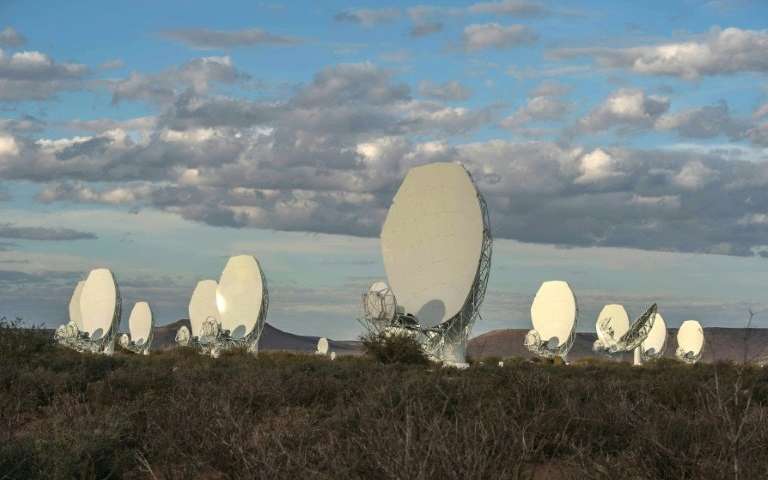
The system’s image resolution quality will be 50 times greater than that of the Hubble Space Telescope
The world’s newest and most powerful radio telescope will allow astronomers explore exploding stars, black holes and traces of the origins of the universe with never before seen detail.
On July 13, officials in South Africa unveiled the 64-dish MeerKAT super radio telescope, the first phase of what could be the largest telescope in the world.
The telescope will be located in the Karoo region, a remote and arid area in the southern part of South Africa. The telescope will be integrated into the multi-nation Square Kilometre Array (SKA), a set of telescopes that when fully operational will be 50 times more powerful than any other telescope across the globe.
“The telescope will be the largest of its own kind in the world—with image resolution quality exceeding the Hubble Space Telescope by a factor of 50 times,” David Mabuza, the deputy president of South Africa, said during a ceremony. “This day represents some of Africa’s milestones… in our quest to catch up with the rest of the world and make our own contributions to civilization.”
SKA is expected to be fully operation by 2030 and will be comprised of 3,000 dishes spread over 0.4 square miles across the remote terrain in several African countries and Australia. The bulk of SKA will be housed in South Africa, which has invested about $240 million thus far for the project.
The telescope is being built by an international consortium that includes Australia, Britain, Canada, China, India, Italy, New Zealand, Sweden and the Netherlands, as well as Botswana, Ghana, Kenya, Madagascar, Mauritius, Mozambique, Nambia and Zambia.
The multi-national approach will allow astronomers to peer deeper into space with unparalleled detail.
For example, according to the South African Radio Astronomy Observatory, a panorama captured by the new telescope on July 13 showed the clearest view of a black hole at the center of the Milky Way Galaxy.
Last month, scientists linked a powerful optical telescope, MeerLITCH, built 125 miles south of Carnarvon, with the MeerKAT to allow for simultaneous optic and radio study of cosmic events as they occur.
“We are listening and looking at the sky at the same time—that is a completely novel concept in astronomy worldwide,” Paul Groot, from Radboud University in the Netherlands, told AFP. “This is the eyes, with the MeerKAT being the ears as a radio telescope. It is fantastic to see what amazing views it produces.”
Previously, astronomers previously had to wait for a cosmic incident to be picked up by a radio telescope and then carry out optic observations.
“It is the first time you have a telescope that will track a radio telescope so that if there are discoveries that are made, you will be able to follow up,” Phil Mjwara, director general in the South African ministry of Science and Technology, told reporters.




